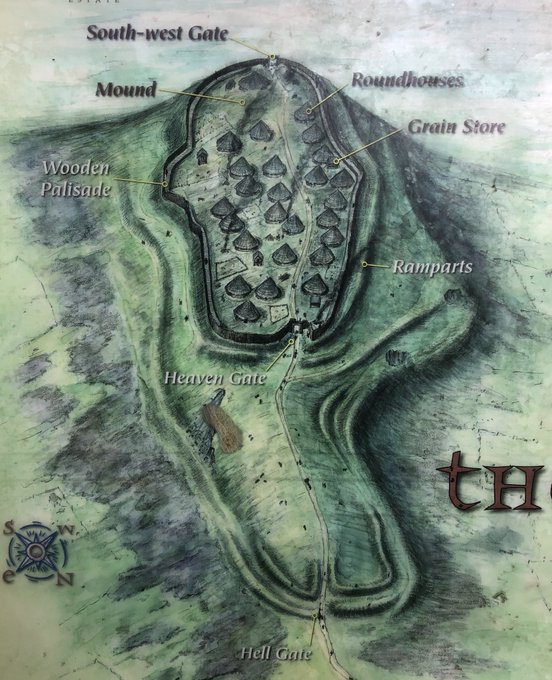The bird’s tail forms the hook of the spear thrower. The end of the spear fits against this hook. Using a spear thrower (also known as an ‘atlatl’) to propel a spear, improves force, speed and distance.
A face from the #VikingAge. A carved male head. Detail from an elaborately decorated oak cart found amongst the luxury grave goods in the Oseberg Viking ship burial of two women in Norway. The burial is dated to AD 834. 📷: © Alison Fisk
#Archaeology
Two Cretans bearing gifts; a copper ingot, conical cup, gold vase and leather-sheathed dagger. Detail from a c. 3,400 year-old Egyptian wall painting in the Tomb of Rekhmire, Thebes. Dynasty 18. Facsimile by Nina de Garis Davies 1925/26. https://t.co/205zBgK8Bh
#Archaeology
The Wrekin in Shropshire boasts two Iron Age hillforts at its summit. Unusually, one is enclosed by the other. The outer hillfort is multivallate, the inner univallate. The NE entrances are known as Hell Gate and Heaven Gate respectively.
#HillfortsWednesday
#Archaeology
The reconstruction of the tomb of the Lady of Baza is on display at the National Archaeological Museum in Madrid, together with an artist’s illustration of the tomb chamber. More info: https://t.co/Cp5O5i8cuK
Mesolithic amber pendant engraved with stylised human figures. Holes for wearing on a cord. Amber pendants from the Danish Mesolithic period (12,500-3,900 BC) have been interpreted as protective Stone Age amulets. From the Åmosen peat bog.
Image: National Museum of Denmark
Old Winchester Iron Age hillfort, located on a chalk spur of the South Downs with extensive views. Within the fort are 3 Bronze Age bowl barrows & possible pond barrow, more barrows outside the western entrance, shown chalk-covered in the artist’s impression.
#HillfortsWednesday
A beautiful Celtic-inspired Romano-British silver pin. Decorated with curvilinear design & red enamel. Part of the Oldcroft Hoard found in Gloucestershire in 1973 with over 3,000 Roman bronze coins and silver fragments. C4th AD.
Image: British Museum. Museum no: 1973,0801.1
Beautiful Bronze Age pyxis from Mycenae, Grave Circle A, 16th century BC. This ancient wooden box is decorated with gold plates with repousse relief depicting lions chasing a deer and antelope.
Image: National Archaeological Museum Athens.
#ReliefWednesday
A wonderful Anglo-Saxon gilt copper alloy brooch in the shape of a recumbent horse. Late C5th AD.
Image: British Museum
Museum number: 1995,0102.865

















